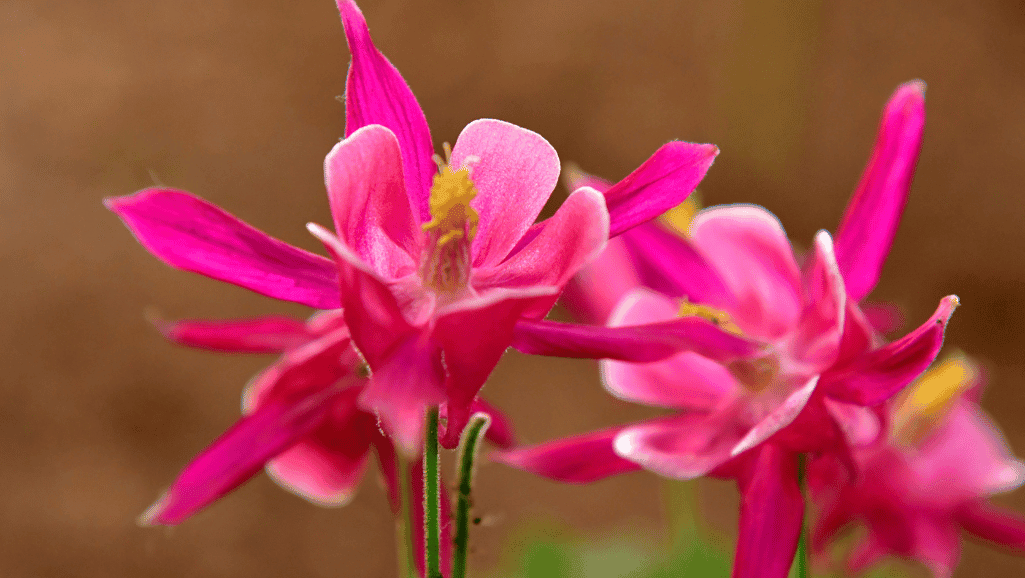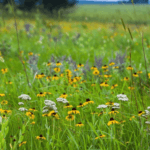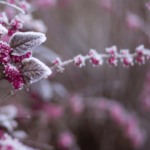
Beautiful flowers gardenia Plants For Your homes

Starting to grow the Aquilegia plant can turn a simple garden into a colorful and lively space. Known for their unique flowers that look like a jester’s hat, columbines charm everyone who sees them. They come in many colors like red, yellow, blue, and purple. These plants are not just pretty; they also attract hummingbirds and bees, making your garden a lively place.
Columbines look delicate but are actually easy to care for, blooming from spring to early summer. They grow in North America, Europe, and Asia and can adapt to different climates. But, they do best in cooler places with lots of moisture. It’s important to keep them away from kids and pets because they are toxic.
If you want to add beauty to your garden with Aquilegia, you should know how to take care of them. They like soil that drains well and stays moist, and they do best in full to partial sunlight. Taking good care of them means you’ll see their beautiful flowers every year.
The Aquilegia columbine, also known as columbine flowers, is a favorite in North American gardens. It’s a hardy perennial that brings beauty with its unique flowers that attract bees, butterflies, and hummingbirds. With about 70 species, knowing how to care for it is key to its success.
Columbines grow best in semi-shaded spots, mimicking their natural habitats. They like soil that’s a bit acidic and drains well but stays moist. Feeding them with a 10-10-10 fertilizer or compost helps them grow strong and bloom brightly.
Once established, columbines can handle drought. But young plants need regular water to grow strong roots. Be careful with columbine, as all parts are toxic to humans. This is important around kids and pets.
Columbines look great in many light conditions, from full sun to shade. They fit well in rock gardens, woodland areas, and cottage gardens. They add color and beauty in spring and summer.
Aquilegia columbine plants are more than pretty. They help attract bees and hummingbirds, making your garden better for nature.
| Characteristics | Preferred Conditions | Growth Response |
|---|---|---|
| Drought Tolerance | Established Plants | Low Water Requirement |
| Soil Type | Slightly Acidic, Well-Drained | Optimal Flowering |
| Light Exposure | Partial Sun to Dappled Shade | Varied Tolerance Across Species |
| Toxicity | All Plant Parts | Careful Handling Required |
| Pollinator Attraction | Bees, Butterflies, Hummingbirds | Enhanced Garden Biodiversity |
Knowing how to care for your Aquilegia columbine ensures it thrives. It brings life and color to your garden for years. These perennials are great for both new and experienced gardeners, offering beauty with little work.
To get vibrant and healthy columbine flowers, it’s key to know the best conditions for the aquilegia plant. Tailoring the environment to meet its needs can boost its growth and blooms. Let’s look at the main factors for its success.
Starting with the right soil is crucial for columbine care. They do well in humusy, well-drained soil with a neutral to slightly acidic pH. Choose a mix of sandy or loamy soils for better drainage than clay. Adding compost before planting brings in organic matter for a healthy start. For tips on soil in warm areas, check out tropical gardening strategies.
Columbines can handle full sun in cooler places but prefer partial shade in the heat. This helps prevent them from getting too stressed and stopping flowering. Picking a columbine type that fits your climate is key for their health and blooms.
At first, columbines need steady moisture to get established. Once they’re grown, they can handle drought but still need watering about once a week. Make sure the top 1-2 inches of soil dry out between waterings to avoid root diseases. Mulching around the plants keeps soil moist and roots cool, helping with their care.
| Sun Exposure | Soil Type | Watering Needs |
|---|---|---|
| Partial Shade Preferred; Tolerates Full Sun in Cooler Climates | Humusy, Well-Drained, Neutral to Slightly Acidic pH | Keep Moist Initially; Drought-tolerant Once Established |
Following these tips for how to grow columbine can make your garden beautiful with these flowers. With proper care, columbines can be a lasting beauty in your garden.
To keep columbine flowers looking great, fertilizing them is key. They need a special diet to stay healthy and bloom well. Columbine flowers, known as Aquilegia, do best with a feeding plan made just for them.
For those who want to improve their columbine care, using a balanced liquid fertilizer is a good idea. A mix with an NPK ratio of 5-10-5 works well. This type of fertilizer helps roots grow strong and gives flowers the nutrients they need to thrive.
| Nutrient | Function | Recommended NPK Ratio |
|---|---|---|
| Nitrogen (N) | Promotes foliage growth | 5 |
| Phosphorus (P) | Stimulates root development | 10 |
| Potassium (K) | Enhances overall plant health | 5 |
It’s important to fertilize regularly but not too much. Do it once a month during the growing season. This prevents too much fertilizer, which can harm the plant and reduce blooms. Always follow the instructions on the fertilizer package to avoid harming your plants.
Focused columbine care through precise fertilization makes your garden more beautiful. It also keeps your Aquilegia plants healthy for a long time.
Learning how to grow columbine starts with the right planting methods. These methods are key for vibrant growth and beautiful flowers in your garden. Whether you’re starting with seeds or moving plants, planning is key.
Planting columbine at the right time is important. The best time is early spring or early summer. This lets the plants grow well during the season. Remember, you’ll see flowers the second year after planting.
Getting the depth and spacing right is crucial for columbine varieties. Place the crown at soil level to help them grow and bloom well. Keep plants about 1 to 2 feet apart. This helps with air flow and prevents diseases like powdery mildew.
Here’s a table with key planting info for different columbine types:
| Characteristics | Description |
|---|---|
| Flower Colors | Red, orange, yellow, blue, purple, violet, pink, white |
| Pest Resistance | Deer resistant; moderate susceptibility to columbine aphid and leaf miners |
| Sun Exposure | Full sun to light shade |
| Soil Type | Moist but well-drained, loamy or sandy |
| Height | Common varieties up to 1m; Dwarf varieties like ‘Nana’ up to 25cm |
For more on growing conditions and the best columbines for your garden, check out our guide at Aquilegia Columbine plants.
Exploring columbine varieties shows a wide range of colors, sizes, and shapes. These can turn any garden into a colorful display. From tiny 6-inch dwarfs to tall 3-foot ‘McKana’s Giants’, there’s a columbine for every garden style. Popular types include Aquilegia canadensis with red and yellow flowers, ‘Crimson Star’ with its bold crimson and white, and ‘McKana Hybrid’ with vibrant bi-colored blooms.
For gardeners who want to know more about these plants, it’s key to understand their care. Columbines love partial shade to full sun and grow well in Texas gardens. They need a soil temperature of 60-70 degrees Fahrenheit to germinate, which takes 20-30 days. Make sure to plant seeds 1/8 inch deep for the best growth.
| Characteristic | Description |
|---|---|
| Plant Lifespan | Typically 3-4 years, reseeding to form colonies |
| Seed Germination | 20-30 days at 60-70°F soil temperature |
| Popular Varieties | Aquilegia canadensis, ‘Crimson Star’, ‘McKana Hybrid’ |
| Light Requirements | Partial shade to full sun |
Adding columbine varieties like ‘Pink Lanterns’ and Aquilegia desertorum from central Arizona is beneficial. These plants are beautiful and support local wildlife by offering habitats and food. They are easy to care for and help make gardens more beautiful and diverse.
Using columbine varieties in your garden looks great and helps the environment. Whether you like the ‘Swallowtail’ or the ‘Little Treasure’, there’s a columbine for every gardener.
Learning how to grow columbine flowers well involves using mulching and saving water. These methods are key for a lively garden with less harm to the environment. Let’s explore why mulching is key and how it helps save water while helping columbine flowers grow.
Mulching is a top tip for growing columbine flowers. It keeps soil moist, stops weeds, and makes the garden look better. Mulching around columbine flowers keeps the soil temperature right, which is crucial for their health and growth. Using things like shredded bark or leaf mulch is great because they break down and improve the soil. They also stop too much water from evaporating, helping you water less often.
Picking the right mulch can really cut down on water use in your garden. Organic mulches like wood chips or shredded leaves work well for growing columbine. They keep moisture in the soil. This means you can water less often, saving water and making sure columbines get steady moisture without getting stressed.
By watering wisely and using mulch, columbine plants grow strong with deep roots. These roots can handle drought and too much moisture well.
| Aspect | Benefits |
|---|---|
| Soil Temperature Regulation | Mulch keeps soil temperature steady, giving columbine roots a good growing spot. |
| Moisture Retention | Organic mulches keep soil moist, cutting down on how often you need to water. |
| Weed Control | Good mulching stops weeds from growing near columbine plants. |
| Aesthetic Appeal | Mulch also makes the garden look better, besides its useful benefits. |
Using these tips for columbine gardening helps columbine plants grow well and supports green gardening. The right mulching and watering make a big difference in your columbine garden.
Starting with columbine seeds can make your garden more vibrant. Here, learn key methods and tips for growing columbines. These will help you get great results and beautiful plants.
For columbine seeds to grow, they need careful preparation. Wait until the seed pods dry and start to open after the flowers bloom. Then, store the seeds in a cool, dry spot or keep them in the fridge. This cold period is important for germination.
When planting, put the seeds in a mix that drains well and cover them lightly with soil. Keep them in a spot that’s lightly shaded and has temperatures between 65° and 70°F. Seeds should start to grow within 30 days, which is key to growing columbines.
Dividing columbine plants makes them healthier and spreads them out in your garden. Do this in the spring so they can grow well all season. Lift the whole plant carefully, then cut it into smaller pieces with a sharp knife or spade. Each piece should have roots and several shoots. Plant them quickly to keep the roots moist.
Following these steps will make your columbines stronger and your garden more beautiful. Here’s a summary of what you need to know for growing columbines:
| Characteristic | Detail |
|---|---|
| Plant Type | Perennial |
| Hardiness | Hardy to -35°F; Hybrids to -20°F |
| Height/Width | 2 to 3 feet tall; 1 to 2 feet wide |
| Flower Size | ¼ to 4 inches long |
| Flower Colors | Yellow, Red, Blue, Purple, Pink, White |
| Bloom Time | Late spring to early summer |
| Light Requirement | Full sun to part shade |
| Spacing | 1 to 2 feet apart |
Use these tips to add columbine seeds to your garden. With the right care, your garden will become a colorful and lively place. Growing columbines well can make your garden stand out.
As the seasons change, so do the needs of your Aquilegia columbine. Proper care in each season keeps this perennial healthy and beautiful all year. We offer advice for each season to keep your columbine perennial blooming well and lasting long.
In the fall, remove wilted leaves and cut the plant stalks to the ground. This stops disease and prepares the plant for spring. Add a thin layer of mulch or leaves to protect the roots from cold winter.
| Season | Care Tips |
|---|---|
| Spring | As temperatures rise, slowly remove the protective mulch to stimulate new growth. This is also a prime time for fertilizing to encourage vibrant blooms. |
| Summer | Maintain regular watering and apply a thin layer of mulch to retain soil moisture. The Aquilegia columbine thrives in moist conditions, especially during hotter months. |
| Fall | Remove spent blooms and foliage to discourage disease and pests. Cutting back the stems prepares the plant for dormancy. |
| Winter | Apply a protective layer of mulch post-first frost to safeguard the roots from freeze-thaw cycles, crucial for your columbine perennial’s survival. |
Watch out for pests and diseases as the seasons change. Catching them early and acting fast is key to keeping your garden healthy and beautiful.
To make your columbine perennial last longer, let some flowers go to seed. This will help it spread naturally, giving you more beauty in your garden every year. Taking good care of your Aquilegia columbine means creating a thriving garden ecosystem.
Keeping columbine plants healthy means fighting pests and diseases. Knowing how to spot and control these threats is key to growing columbine well.
Phytomyza aquilegivora, or leaf miners, can harm columbine leaves. They leave trails on the leaves. These pests can have up to three generations a year, so catching them early is important.
To manage them, check leaves often and remove damaged ones. For big problems, you might need to use imidacloprid or spinosad.
Fungal diseases like gray mold and powdery mildew can hurt columbines. Gray mold likes cool, wet places, often hitting older or damaged leaves. Powdery mildew does well in humid areas.
To fight these diseases, keep your plants clean. Remove old flowers and use fungicides like potassium bicarbonate or sulfur on infected spots.
| Pest/Disease | Prevalence | Control Measures |
|---|---|---|
| Leaf Miners | Common in Midwest, 3 generations/year | Manual removal, imidacloprid, spinosad |
| Gray Mold | Favored by cool, wet conditions | Remove old flowers, fungicide application |
| Powdery Mildew | Spreads in high humidity without free water | Fungicides (potassium bicarbonate, sulfur) |
| Columbine Sawfly | Active Apr-Jun, 1 generation/year | Foliar sprays (acephate, pyrethrins), soil drench (imidacloprid) |
Regular care and watching your columbines are key to stopping pests and diseases. This keeps your garden healthy.
The Aquilegia columbine, also known as the Eastern red columbine or Aquilegia canadensis, has a captivating blooming cycle. It enchants gardeners and wildlife with its vibrant flowers. These blooms last about four weeks in spring, from mid-May to June, especially in places like Wisconsin.
This flower is not just a pretty sight. It’s also vital to local ecosystems. Hummingbirds love it, and it’s where the columbine duskywing caterpillar lives. Each flower is about 1-2 inches long, with five yellow petals and red sepals. Under the right conditions, the flowers can turn rich red and orange, brightening up gardens.
The columbine flower is also adaptable and tough. It does well in shady spots and grows to be about 2 to 3 feet tall. Gardeners like it because it’s not bothered by pests like leaf miners. Deer and rabbits don’t eat it, making it perfect for easy-care gardens.
Aquilegia columbine is a joy in the garden, not just when it blooms. It spreads its seeds easily, ensuring it keeps coming back. This, along with its beauty and role in nature, makes it a favorite in gardens everywhere.
We’ve explored the world of Aquilegia columbine, offering guidance on how to care for these beautiful flowers. They are essential to a thriving garden and show the beauty of nature. With their unique five-petaled flowers, columbines attract specific pollinators, playing a key role in pollination.
The Aquilegia genus includes about 70 species worldwide, each fascinating in its own way. Research shows that their unique nectar spurs lead to a lot of species. These flowers attract hummingbirds and hawkmoths, helping with pollination and hybridization.
In places like the Sierra Nevada, columbines have naturally mixed with other species. This shows their ability to adapt and thrive in different environments. These hybrids are a testament to their strength and ability to create new varieties.
Gardeners love columbines for their beauty and the mystery they add to our gardens. These perennials help increase biodiversity and bring joy with their lovely blooms. They are a true delight for anyone who loves nature.




